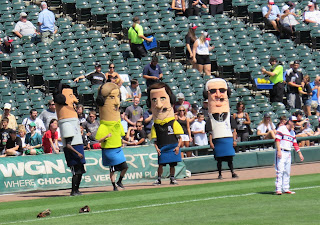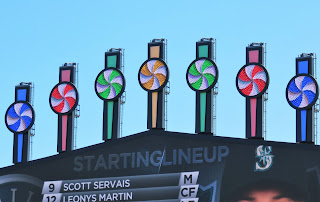Of the many notable things
about Chicago, the innovative and experimental architecture is among the most
intriguing. In the city where skyscrapers were invented, there are 1264 high-rises,
with 44 that stand taller than 600 feet. To learn more about this unique
conclave of modern construction, we took a guided architectural boat cruise
down the Chicago River. Our tour guide was a Chicago native who studied
architecture in school, and was quite passionate on the subject. He was able to
provide us in-depth knowledge on the names of buildings, the architects who
built them, the years they were built, interesting bits of trivia, and his own
interpretation of what many of the structures conjured up in his own mind. He
pointed out how the balconies on one building looked like hundreds of open
filing cabinets; another set of two buildings that looked like corn cobs; one
building shaped like a three dimensional clover towering skyward – if you
looked at it from above. His observations were interesting, entertaining, and knowledgeable,
and I came away with a deeper appreciation for these brilliant constructions
from some of the most notable architects in the world.
At first there can appear to
be a sameness to the structures, a sense of being overwhelmed with so many buildings
all towering to the sky. But then, all of a sudden there appears a deep red
building in a sea of mostly blue and white reflective glass; out pops the
40-story Loop Building with its own “You Are Here” map engraved up one side; there
is the whimsical Aqua building that looks like it is covered with tiny waves or
fins; and the not-very-tall, but very ornate, Water Works building. Every
building has its own history, something unique and interesting to add to the
overall landscape. Here are just a few pictures of the many we took during this
highly recommended cruise.



























































